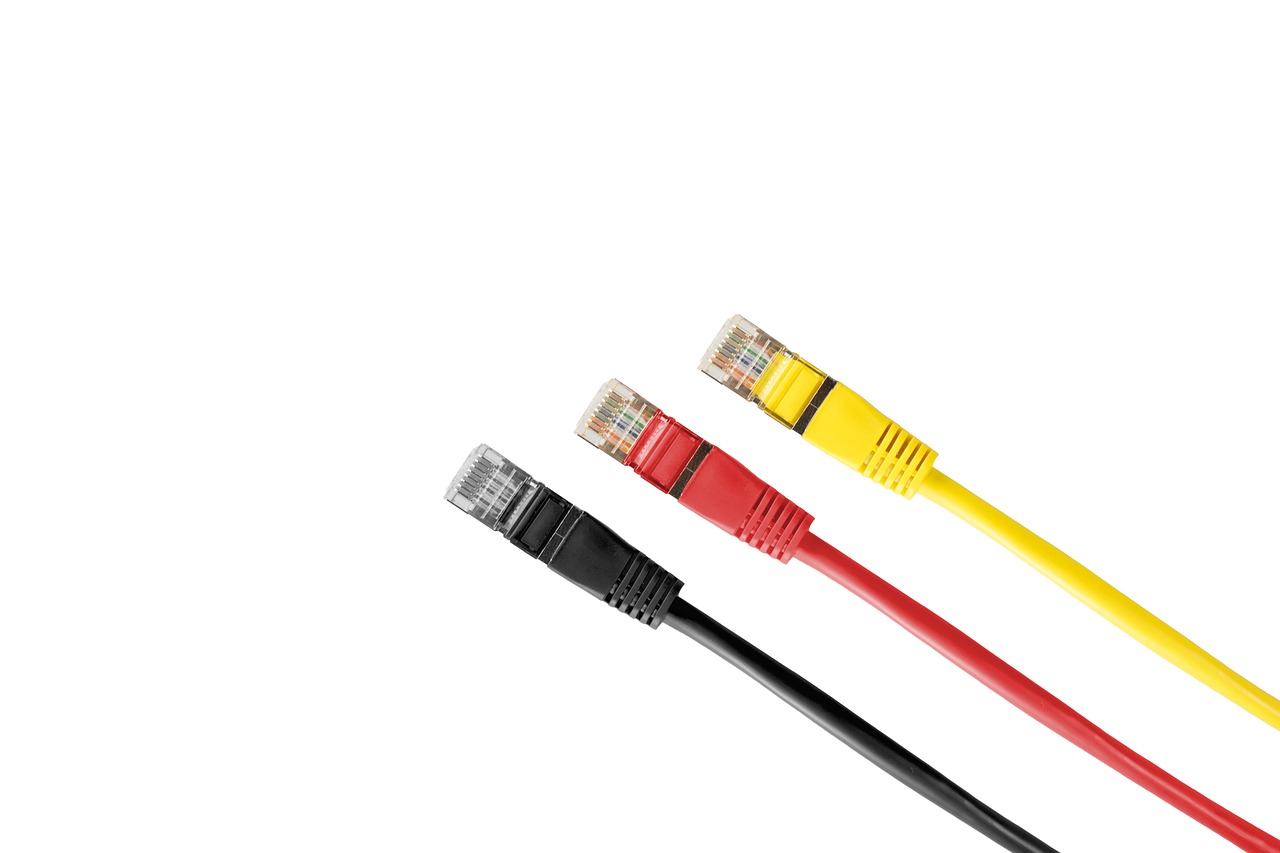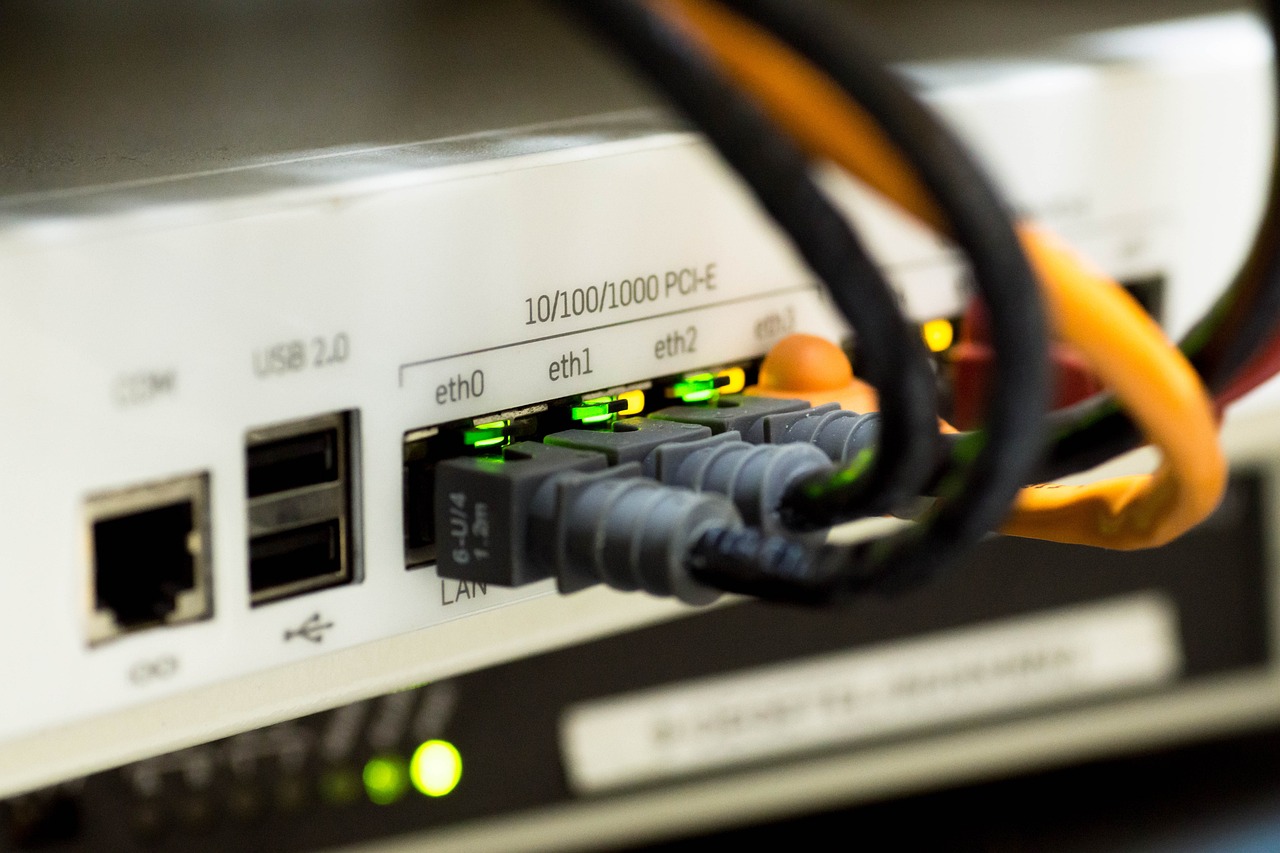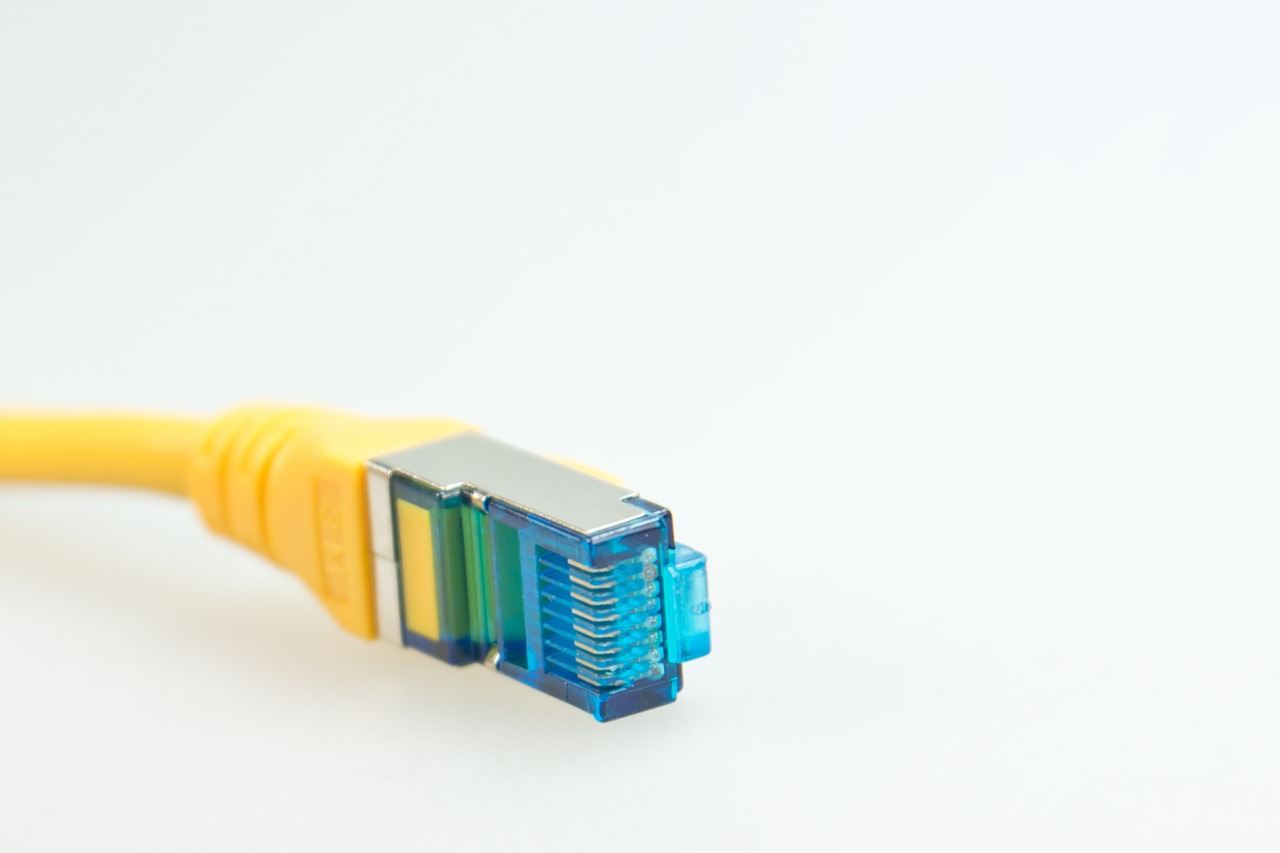Helium - The People's Network for IoT
In today's fast-paced digital world, connectivity is not just a luxury; it's a necessity. Enter Helium, a revolutionary decentralized network designed specifically for the Internet of Things (IoT) devices. Imagine a world where your smart devices communicate effortlessly without relying on traditional, expensive cellular networks. Helium is paving the way for this future by creating a low-power, wide-area network that not only connects devices but also empowers communities. This article delves into the intricacies of Helium, exploring its unique technology, the multitude of benefits it offers, and the implications it holds for the future of connectivity.
At its core, Helium is a blockchain-based network that provides a seamless solution for IoT devices to communicate securely and efficiently. Unlike conventional networks that rely on centralized infrastructure, Helium operates on a decentralized model, allowing users to participate actively in the network's growth and maintenance. This means that not only can devices transmit data, but users can also earn rewards for their contributions. It's a win-win situation that fosters a sense of community while ensuring robust connectivity for IoT applications.
The magic of Helium lies in its unique architecture, primarily powered by Hotspots. These Hotspots are not just ordinary wireless access points; they double as blockchain nodes that validate transactions and provide coverage for IoT devices. When you set up a Hotspot, you're not only enhancing the network's reach but also earning Helium Network Tokens (HNT) as a reward for your efforts. This innovative model encourages users to place Hotspots strategically, creating a vast network that thrives on community participation.
Hotspots are the backbone of the Helium network, playing a crucial role in its functionality and expansion. Each Hotspot contributes to the network's coverage, allowing IoT devices to connect and communicate over long distances. The more strategically placed a Hotspot is, the greater the coverage it provides, which in turn leads to higher rewards for the owner. It's like planting a tree in a garden; the more trees you have, the more shade and beauty your garden offers. In Helium's case, the more Hotspots, the stronger and more reliable the network becomes.
Setting up a Helium Hotspot is remarkably straightforward. You don’t need to be a tech wizard to get involved. With just a few simple steps, anyone can contribute to the network while earning HNT tokens. All you need is a compatible device, a good internet connection, and a suitable location. Once your Hotspot is live, you can sit back and watch your rewards accumulate as you help expand the Helium network.
The effectiveness of a Hotspot largely depends on its location. To maximize rewards and ensure a robust network, understanding coverage areas is crucial. Factors such as elevation, nearby structures, and the density of other Hotspots can significantly impact performance. It’s akin to fishing in a lake; knowing where the fish are likely to be can make all the difference between a good catch and a wasted day. Similarly, placing your Hotspot in an optimal location can enhance its connectivity and profitability.
The decentralized nature of Helium enhances its security significantly. By distributing data across multiple nodes, the network minimizes vulnerabilities that often plague centralized systems. This means that even if one node goes down, the network continues to function smoothly. It's like having a team of lifeguards at a beach; if one takes a break, others are still there to ensure safety. This resilience creates a more secure infrastructure for IoT applications, making Helium an appealing choice for businesses and developers alike.
Helium offers a plethora of advantages that make it an attractive option for IoT connectivity. From lower costs to improved data security, the benefits are numerous. One of the standout features of Helium is its ability to foster community engagement. By allowing users to earn rewards while contributing to the network's growth, Helium not only builds a robust infrastructure but also creates a sense of ownership among its users.
One of the primary benefits of Helium is its cost-effectiveness compared to traditional cellular networks. This affordability opens the door for businesses and developers to deploy IoT solutions without breaking the bank. Imagine being able to connect thousands of devices without the hefty price tag associated with conventional connectivity options. Helium makes this possible, promoting innovation and growth in the IoT space.
Helium excels in fostering community involvement through its incentive structure. Users can earn rewards for their contributions, which enhances the overall sustainability of the network. This community-centric approach not only encourages participation but also cultivates a sense of belonging among users. It’s like being part of a neighborhood watch; everyone looks out for one another, leading to a safer and more connected environment.
While Helium boasts numerous advantages, it also faces challenges that potential users and investors should consider. Issues such as scalability and competition from established networks pose significant hurdles. Understanding these limitations is crucial for making informed decisions about involvement in the Helium network.
As the number of connected devices continues to grow, scalability becomes a pressing concern for Helium. Addressing these challenges will be vital for maintaining network performance and reliability. Just as a highway needs to expand to accommodate increasing traffic, Helium must adapt to the growing demand for connectivity to ensure a seamless experience for users.
Helium is not alone in the IoT connectivity landscape. It competes with various traditional and emerging solutions, each with its strengths and weaknesses. Analyzing Helium's position in the market helps to understand its potential for future growth and adoption. It's essential to keep an eye on competitors while also recognizing Helium's unique offerings that set it apart.
Q: What is Helium?
A: Helium is a decentralized network designed for IoT devices, providing low-power, wide-area connectivity.
Q: How do I set up a Helium Hotspot?
A: Setting up a Hotspot is simple; you need a compatible device, a good internet connection, and a suitable location.
Q: What are the benefits of using Helium?
A: Helium offers cost-effective connectivity, improved data security, and encourages community engagement.
Q: What challenges does Helium face?
A: Helium faces challenges related to scalability and competition from established networks.

What is Helium?
Helium is a revolutionary blockchain-based network that aims to redefine connectivity for Internet of Things (IoT) devices. Imagine a world where your smart devices can communicate seamlessly without the hefty price tag of traditional cellular services. That’s exactly what Helium offers! By leveraging a decentralized model, Helium provides low-power, wide-area connectivity that is both secure and efficient. This network is built on the idea that anyone can contribute to its expansion and stability, making it a true community-driven initiative.
At its core, Helium operates on the principle of decentralization, which means that no single entity controls the network. Instead, it relies on a vast number of users who set up their own Hotspots to provide coverage. These Hotspots not only serve as wireless access points but also act as nodes on the blockchain, validating transactions and maintaining the integrity of the network. This innovative approach not only enhances connectivity but also incentivizes users to participate actively. By doing so, they can earn HNT tokens as a reward for their contributions, creating a win-win situation for both the individual and the community.
To better understand Helium, let's break down its key components:
- Decentralization: No central authority controls the network, which enhances security and reliability.
- Community Participation: Users can earn rewards by setting up Hotspots, encouraging widespread involvement.
- Low Power Consumption: Designed specifically for IoT devices, Helium's network is energy-efficient, making it ideal for devices that need to operate over long periods.
In essence, Helium is not just another connectivity solution; it’s a paradigm shift in how we think about and utilize IoT technology. As more devices come online and the demand for connectivity grows, Helium stands at the forefront, ready to provide a scalable, affordable, and community-oriented alternative.

How Helium Works
Helium operates on a unique framework that combines the principles of blockchain technology with the practical needs of Internet of Things (IoT) devices. At its core, the Helium network is powered by Hotspots, which are not just ordinary hardware; they serve a dual purpose. These devices act as both a wireless access point for IoT devices and a blockchain node that contributes to the overall functionality of the network. This innovative model creates a decentralized network that is both secure and efficient.
To understand how Helium works, we need to delve into the mechanics of these Hotspots. Each Hotspot provides low-power, wide-area connectivity, which is essential for IoT devices that often need to transmit small amounts of data over long distances. This is particularly useful for devices like smart meters, environmental sensors, and other applications that require consistent connectivity without draining battery life. Hotspots are strategically positioned to maximize coverage, ensuring that IoT devices can connect reliably.
When a user sets up a Hotspot, they become part of the Helium network, contributing to its expansion. In return for their participation, they earn HNT tokens, Helium's native cryptocurrency. The earning potential is directly linked to the Hotspot's performance and its ability to provide coverage to nearby IoT devices. This incentivizes users to not only set up Hotspots but also to place them in optimal locations for maximum coverage.
Hotspots play a crucial role in the Helium ecosystem. They are the backbone of the network, providing the necessary infrastructure to support a growing number of IoT devices. Here’s how they contribute:
- Coverage: Hotspots increase the network's reach, allowing more devices to connect seamlessly.
- Rewards: Users earn HNT tokens based on the amount of data transmitted through their Hotspot and the number of devices connected.
- Decentralization: By distributing the network across many Hotspots, Helium reduces the risk of single points of failure, enhancing overall security.
Setting up a Helium Hotspot is surprisingly straightforward. Users don’t need to be tech wizards; a basic understanding of networking is sufficient. The process typically involves:
- Purchasing a compatible Hotspot device.
- Connecting it to the internet.
- Completing a simple setup process via the Helium app.
Once the Hotspot is live, it begins to operate within the Helium network, providing coverage and earning rewards almost immediately. It’s like planting a seed in a garden; with the right conditions, it will flourish and yield benefits over time.
The effectiveness of a Hotspot is heavily influenced by its geographical location. Urban areas with higher densities of IoT devices will naturally yield better rewards than rural locations. Understanding coverage areas can significantly impact a user’s earning potential. For instance, placing a Hotspot on a rooftop can enhance its range, allowing it to connect with more devices. It’s essential for potential Hotspot owners to research and choose optimal locations that will maximize their contributions to the network.
Helium’s decentralized model is a game-changer. By distributing data across various nodes, the network enhances its security and resilience. This means that even if one Hotspot goes offline, the network continues to function smoothly. In a world where data breaches are all too common, Helium’s approach offers a robust solution for IoT applications, ensuring that data transmission remains secure and reliable.
- What is a Hotspot? A Hotspot is a device that provides wireless coverage for IoT devices and contributes to the Helium blockchain.
- How do I earn HNT tokens? You earn HNT tokens by setting up a Hotspot and providing coverage for IoT devices.
- Can I set up multiple Hotspots? Yes, you can set up multiple Hotspots, but they must be spaced adequately to avoid interference.
- Is Helium secure? Yes, Helium’s decentralized model enhances security by distributing data across multiple nodes.

The Role of Hotspots
Hotspots are the backbone of the Helium network, acting as both a wireless access point and a blockchain node. Imagine them as the friendly neighborhood hubs that bring the Internet of Things (IoT) to life. Each Hotspot not only provides coverage but also plays a crucial role in the network's decentralized structure. By serving dual purposes, these devices help create a robust and expansive coverage area that is vital for IoT devices to communicate effectively.
When you think of Hotspots, consider them as the stars in a vast galaxy, each shining brightly in its own corner. Their strategic placement is essential; the more well-placed Hotspots there are, the better the network's performance becomes. This means that users can enjoy reliable connectivity for their devices, ranging from smart sensors to tracking devices. The placement of these Hotspots is not just a matter of convenience but a science, ensuring that the network can support a growing number of connected devices.
Moreover, Hotspots are incentivized to expand the network. Every time a device connects through a Hotspot, the owner earns HNT tokens, creating a win-win situation. This reward system encourages community participation, allowing individuals to contribute to the network's growth while also benefiting financially. It's almost like being part of a cooperative, where everyone works together for mutual gain. The more you contribute, the more rewards you earn, which is a powerful motivator for users to set up and maintain Hotspots.
In addition to providing coverage and earning rewards, Hotspots also enhance the security of the Helium network. By distributing data across multiple nodes, they minimize vulnerabilities that can be exploited by malicious actors. Think of it like a well-fortified castle; the more towers you have, the harder it is for an invader to breach the walls. This decentralized model not only ensures that data remains secure but also fosters a more resilient infrastructure for various IoT applications.
In summary, Hotspots are not just devices; they are essential components that drive the Helium network forward. They enhance connectivity, provide financial incentives for users, and contribute to the overall security of the network. As the IoT landscape continues to evolve, the role of Hotspots will only become more critical, making them a key player in the future of connectivity.
- What is a Helium Hotspot? - A Helium Hotspot is a device that provides wireless coverage for IoT devices while also acting as a blockchain node, earning rewards for its contributions.
- How do I set up a Hotspot? - Setting up a Hotspot is straightforward and requires minimal technical knowledge. You can follow the manufacturer's instructions to get started.
- What are the rewards for running a Hotspot? - Hotspot owners earn HNT tokens as rewards for providing coverage and helping to expand the network.
- How does the location of a Hotspot affect its performance? - The effectiveness of a Hotspot largely depends on its location; strategically placed Hotspots can cover a larger area and earn more rewards.

Setting Up a Hotspot
Setting up a Helium Hotspot is not only straightforward but also an exciting venture for anyone looking to contribute to the growing Internet of Things (IoT) ecosystem. Imagine being part of a community that connects devices while earning rewards—sounds intriguing, right? To get started, you don’t need to be a tech wizard; all you need is a few basic components and a little bit of patience.
First things first, you'll need a compatible Helium Hotspot device. These devices come in various models, so it’s essential to choose one that suits your needs and budget. Once you have your Hotspot, the setup process typically involves:
- Connecting the Hotspot to a power source.
- Linking it to your home Wi-Fi network.
- Downloading the Helium app to configure and manage your Hotspot.
After you’ve got your Hotspot up and running, it’s time to find the perfect location for it. The placement of your Hotspot is crucial for maximizing its coverage area and, subsequently, your rewards. Ideally, you should position it in an elevated area, away from obstructions like tall buildings or dense trees. Think of your Hotspot as a lighthouse—its light needs to shine far and wide to guide the ships (or in this case, IoT devices) safely to shore.
As your Hotspot starts operating, you’ll earn Helium Network Tokens (HNT) for the data your devices transmit. It’s a win-win situation: you help expand the network while getting rewarded for your efforts. The more users that join the network and set up their Hotspots, the more robust and effective the Helium network becomes.
In addition to the technical aspects, it’s also important to engage with the Helium community. There are numerous forums and groups where you can share experiences, troubleshoot issues, and learn from others. This communal spirit not only enhances your understanding of the network but also fosters a sense of belonging in this innovative space.
In summary, setting up a Helium Hotspot is a fantastic way to dive into the world of IoT. With just a few simple steps and a little community involvement, you can contribute to a decentralized network that is changing how we think about connectivity. So why wait? Join the revolution today!
| Question | Answer |
|---|---|
| Do I need technical skills to set up a Hotspot? | No, setting up a Hotspot is user-friendly and requires minimal technical knowledge. |
| How much can I earn by running a Hotspot? | Earnings can vary based on location and network activity, but many users report earning a significant amount of HNT tokens. |
| What is the best location for a Hotspot? | Higher elevations with fewer obstructions are ideal for maximizing coverage and rewards. |
| Can I run multiple Hotspots? | Yes, you can operate multiple Hotspots, but it’s crucial to ensure they are spaced adequately to avoid interference. |

Hotspot Coverage Areas
The effectiveness of a Helium Hotspot is significantly influenced by its coverage area. Just like a lighthouse guiding ships through fog, a well-placed Hotspot can illuminate vast stretches of territory, ensuring that IoT devices remain connected and functional. The placement of a Hotspot isn't just a matter of chance; it requires careful consideration of various factors to maximize its potential.
To truly understand how to optimize Hotspot placement, we need to consider several crucial elements:
- Geographical Features: The presence of hills, buildings, and other obstacles can impact signal strength. Ideally, a Hotspot should be positioned in an open area to enhance its reach.
- Density of IoT Devices: Areas with a higher concentration of IoT devices will naturally yield more rewards for Hotspot owners. Identifying these hotspots (pun intended) can be a game-changer.
- Community Engagement: Collaborating with other Hotspot owners can lead to better coverage and increased rewards. Sharing insights and strategies with neighbors can create a more robust network.
Moreover, it's essential to recognize that the Helium network is dynamic. As more users join and place their Hotspots, the overall coverage evolves. This means that what might have been a prime location yesterday could become less effective tomorrow. Therefore, staying informed about network changes and regularly assessing your Hotspot's performance is crucial.
To illustrate the impact of location on coverage, consider the following table that highlights various factors affecting Hotspot effectiveness:
| Factor | Description | Impact on Coverage |
|---|---|---|
| Geographical Features | Obstacles like hills and buildings | Can reduce signal strength |
| IoT Device Density | Number of devices in the area | Higher density increases rewards |
| Community Collaboration | Working with other Hotspot owners | Enhances overall network strength |
In summary, understanding the nuances of Hotspot coverage areas is crucial for anyone looking to make the most out of their Helium Hotspot. By strategically placing your device, considering geographical features, monitoring IoT device density, and engaging with the community, you can not only boost your rewards but also play a vital role in the expansion of the Helium network. The key is to remain adaptable and responsive to the ever-changing landscape of IoT connectivity.
1. How can I determine the best location for my Helium Hotspot?
Research local geographical features, assess the density of IoT devices, and consider collaborating with other Hotspot owners in your area.
2. Can I move my Hotspot once it's set up?
Yes, you can relocate your Hotspot, but be sure to analyze the new location's potential for coverage and rewards.
3. What rewards can I expect from running a Helium Hotspot?
Rewards vary based on Hotspot performance, location, and the number of connected devices in your area. The more effective your Hotspot, the higher your potential earnings.

Decentralization and Security
When we talk about Helium, one of the standout features that truly sets it apart is its commitment to decentralization. Imagine a vast web of interconnected devices, each playing a crucial role in a larger ecosystem. In the case of Helium, this ecosystem is built on a blockchain framework that distributes data across numerous nodes. This decentralized approach is not just a buzzword; it’s a fundamental shift in how we think about network security and reliability.
By spreading data across various nodes, Helium minimizes the risk of a single point of failure. Traditional networks often rely on centralized servers, which can become vulnerable to attacks or outages. In contrast, Helium's architecture ensures that even if one node goes down, the network continues to function seamlessly. This resilience is vital for Internet of Things (IoT) applications, where consistent connectivity is key to performance.
Moreover, decentralization fosters a sense of community ownership. Each Hotspot owner contributes to the network's strength, enhancing security through collective participation. When more individuals are involved, it becomes increasingly difficult for malicious actors to disrupt the network. Think of it as a neighborhood watch program, where the more people are looking out for each other, the safer everyone feels.
To illustrate the security benefits of Helium’s decentralized model, consider the following table:
| Aspect | Centralized Networks | Decentralized Networks (Helium) |
|---|---|---|
| Vulnerability | High – single point of failure | Low – distributed data across nodes |
| Ownership | Controlled by a single entity | Community-driven |
| Maintenance | Requires centralized management | Self-sustaining through community contributions |
| Scalability | Limited by central server capacity | Enhanced as more nodes join |
As we dive deeper into the implications of Helium’s decentralized model, it’s essential to recognize that security is not just about protecting data; it’s also about trust. When users know that their data is not being controlled by a single entity, they are more likely to engage with the network. This trust is paramount, especially in an era where data breaches are all too common.
In conclusion, Helium’s approach to decentralization and security not only fortifies the network but also empowers its users. It’s a win-win situation – the network becomes more resilient, and users feel a greater sense of involvement and security. As IoT continues to grow, Helium’s model could very well be the blueprint for future networks, paving the way for a more secure and decentralized digital landscape.
- What is Helium? Helium is a decentralized network that provides low-power, wide-area connectivity for IoT devices, utilizing a blockchain framework.
- How do Hotspots work? Hotspots serve as both wireless access points and blockchain nodes, providing coverage and earning rewards for their operators.
- What are the benefits of using Helium? Benefits include cost-effectiveness, improved data security, and community engagement in network development.
- Are there any challenges with Helium? Yes, scalability and competition from established networks are significant challenges that Helium faces.

Benefits of Using Helium
Helium is not just another connectivity solution; it represents a paradigm shift in how we think about Internet of Things (IoT) connectivity. One of the most compelling advantages of Helium is its cost-effectiveness. Traditional cellular networks can be prohibitively expensive, especially for businesses looking to deploy numerous IoT devices. Helium dramatically reduces these costs, making it an attractive option for startups and small businesses alike. By leveraging a decentralized network, Helium allows users to connect devices at a fraction of the cost, paving the way for a more inclusive IoT ecosystem.
Moreover, Helium enhances data security through its blockchain technology. In a world where data breaches are becoming increasingly common, the decentralized nature of Helium ensures that data is not stored in a single location, thus minimizing the risk of unauthorized access. This security feature is crucial for businesses that rely on sensitive data transmitted from their IoT devices. With Helium, users can enjoy peace of mind knowing their data is protected by a robust infrastructure.
One of the most fascinating aspects of Helium is its ability to foster community engagement. Unlike traditional networks that operate in isolation, Helium encourages users to participate actively in network development. By setting up Hotspots, users not only contribute to the network's expansion but also earn HNT tokens as rewards. This incentive structure creates a sense of ownership among users, driving them to maintain and improve the network collectively. It’s like being part of a community garden—everyone benefits from the fruits of their labor.
In addition to these benefits, Helium holds the potential for widespread adoption across various industries. From agriculture monitoring to smart city applications, the possibilities are endless. The flexibility of Helium's network allows it to adapt to different use cases, making it an ideal choice for businesses looking to innovate. Imagine a farmer using IoT sensors to monitor soil moisture levels in real-time. With Helium, they can do this without incurring hefty fees, thus optimizing their operations and increasing productivity.
To summarize, the benefits of using Helium can be encapsulated as follows:
- Cost-Effectiveness: Significantly lower costs for IoT connectivity.
- Enhanced Data Security: Decentralized data storage minimizes risks.
- Community Engagement: Users earn rewards while contributing to network growth.
- Flexibility: Adaptable to various industries and applications.
As Helium continues to grow, its unique benefits position it as a formidable player in the IoT landscape. Whether you're a business owner, a developer, or simply an enthusiast, the Helium network offers an innovative solution that could redefine how we connect devices in the future.
1. What is Helium?
Helium is a decentralized network designed for the Internet of Things (IoT), providing low-power, wide-area connectivity through a community-driven model.
2. How do Hotspots work?
Hotspots serve as both a wireless access point and a blockchain node, allowing users to earn rewards while providing coverage for the network.
3. What are the rewards for setting up a Hotspot?
Users earn HNT tokens as rewards for providing coverage and contributing to the network's expansion.
4. Is Helium secure?
Yes, Helium employs blockchain technology to enhance data security by decentralizing data storage, reducing the risk of breaches.
5. Can Helium be used in various industries?
Absolutely! Helium is flexible and can be applied in sectors like agriculture, logistics, smart cities, and more.

Cost-Effectiveness
When it comes to deploying Internet of Things (IoT) solutions, one of the most significant concerns for businesses and developers alike is cost. Traditional cellular networks can be prohibitively expensive, especially for large-scale IoT deployments. This is where Helium shines, presenting a cost-effective alternative that dramatically reduces the financial barriers associated with IoT connectivity.
Helium's decentralized model allows users to set up their own Hotspots, which serve as both a network access point and a node for the blockchain. By doing this, users can earn HNT tokens as rewards, effectively offsetting their operational costs. Imagine being able to turn your home or office into a mini-cellular tower while getting paid for it! This unique incentive structure not only encourages participation but also enhances the network's overall reach and reliability.
To put this into perspective, let's consider a comparison of costs:
| Connectivity Type | Average Monthly Cost | Notes |
|---|---|---|
| Traditional Cellular Network | $30 - $100 | Costs vary based on data usage and service provider |
| Helium Network | Minimal (potentially free if you earn enough HNT) | Users can earn HNT tokens to cover costs |
This table illustrates just how affordable Helium can be in comparison to conventional solutions. The more Hotspots that are deployed, the less each user has to spend on connectivity. It’s a win-win situation!
Furthermore, Helium's cost-effectiveness extends beyond just monetary savings. The network allows for a wide array of applications, from smart agriculture to environmental monitoring, which were previously unfeasible due to high connectivity costs. With Helium, innovators can focus on their projects without the constant worry of skyrocketing expenses.
In summary, Helium not only democratizes access to IoT connectivity but does so in a way that is both affordable and sustainable. By leveraging community participation, it creates a self-sustaining ecosystem that benefits everyone involved. The future of IoT is bright, and Helium is leading the charge with its revolutionary approach to cost-effectiveness.
- What is Helium? Helium is a decentralized network that provides low-power, wide-area connectivity for IoT devices.
- How do I earn HNT tokens? You can earn HNT tokens by setting up a Helium Hotspot and providing network coverage.
- Is Helium more cost-effective than traditional networks? Yes, Helium offers significantly lower costs for IoT connectivity compared to traditional cellular networks.
- What types of applications can benefit from Helium? Helium is suitable for various applications, including smart cities, agriculture, and environmental monitoring.

Community Engagement
Community engagement is the heartbeat of the Helium network, and it’s what sets it apart from traditional IoT solutions. Imagine a bustling neighborhood where everyone contributes a little something to make the community thrive; that’s exactly how Helium operates. By incentivizing users to set up and maintain Hotspots, Helium not only builds a robust network but also fosters a sense of ownership and collaboration among its participants.
At the core of this engagement is the reward system. Users who contribute their Hotspots earn HNT tokens, which serve as both a form of currency and a badge of honor within the Helium community. This system transforms what could be a mundane task of providing connectivity into a rewarding experience. It’s like getting paid to help your neighbors while also enhancing your own connectivity! The more Hotspots you have in your area, the better the network coverage, which in turn increases the potential for everyone to earn rewards.
Furthermore, the Helium network encourages users to share their experiences and insights. This open dialogue creates a vibrant community where individuals can learn from each other, share best practices, and even collaborate on innovative projects. For example, users often discuss optimal Hotspot placements, troubleshooting common issues, and strategies for maximizing earnings. This sharing of knowledge not only strengthens the network but also builds lasting relationships among members.
In addition to individual contributions, Helium also facilitates community events and initiatives. These gatherings, whether virtual or in-person, provide an opportunity for users to connect, brainstorm, and celebrate their achievements. They can range from simple meetups to larger conferences where experts share insights on the future of IoT and blockchain technology. Such events help to solidify the community’s commitment to the network and inspire new members to join the cause.
Ultimately, community engagement in Helium is about creating a sustainable ecosystem where everyone benefits. It’s not just about passive participation; it’s about active involvement, collaboration, and mutual growth. As Helium continues to expand, the strength of its community will play a pivotal role in shaping its future. By empowering individuals and encouraging collective efforts, Helium is paving the way for a new era of connectivity that is not only efficient but also deeply rooted in community values.
- What is Helium? - Helium is a decentralized network that provides low-power, wide-area connectivity for IoT devices, utilizing blockchain technology.
- How do I set up a Helium Hotspot? - Setting up a Hotspot is user-friendly and requires minimal technical knowledge. Simply follow the instructions provided by Helium.
- What rewards can I earn? - Users earn HNT tokens as rewards for contributing to the network through their Hotspots.
- Is Helium secure? - Yes, Helium's decentralized model enhances security by distributing data across multiple nodes, reducing vulnerabilities.
- What challenges does Helium face? - Helium faces challenges such as scalability and competition from established networks, which are important to consider for users and investors.

Challenges and Limitations
While Helium presents a revolutionary approach to IoT connectivity, it is not without its challenges and limitations. Understanding these hurdles is essential for anyone considering participation in this network. One of the most pressing concerns is scalability. As the number of connected devices continues to surge, Helium must ensure that its infrastructure can handle the increased data traffic without compromising performance. This is akin to a city that must expand its roads and public transport systems to accommodate a growing population; if not managed well, traffic jams (or in this case, network congestion) could become a significant issue.
Another challenge lies in the competition from established cellular networks and newer IoT solutions. Traditional providers have the advantage of long-standing infrastructure and customer trust, which can make it difficult for Helium to gain traction. It's a bit like a new restaurant opening in a neighborhood filled with beloved eateries; despite having a unique menu, it must find a way to attract diners away from their usual spots.
Additionally, there are concerns surrounding the regulatory environment for decentralized networks. As governments begin to take notice of blockchain technology and its implications, regulations may emerge that could impact how Helium operates. This uncertainty can create hesitance among potential users and investors, as they might worry about future compliance costs or operational restrictions.
To illustrate some of these challenges, consider the following table that summarizes the key issues Helium faces:
| Challenge | Description |
|---|---|
| Scalability | Increasing number of devices may lead to network congestion and decreased performance. |
| Competition | Established networks have significant market share and customer loyalty. |
| Regulatory Environment | Potential regulations could impact the operation and growth of decentralized networks. |
Moreover, Helium's reliance on community participation through Hotspots introduces another layer of complexity. The network's effectiveness is directly tied to the number and distribution of these Hotspots. If community engagement wanes, the network could face coverage gaps, which could hinder its overall utility. This situation emphasizes the importance of a strong community and the need for continuous education and motivation to keep users engaged.
In conclusion, while Helium's decentralized model offers significant advantages, potential users and investors must be aware of these challenges. By understanding the limitations and actively participating in discussions about solutions, the Helium community can work towards overcoming these hurdles, ensuring a more robust and sustainable future for IoT connectivity.
- What is Helium? Helium is a decentralized, blockchain-based network that provides low-power, wide-area connectivity for IoT devices.
- How do I set up a Helium Hotspot? Setting up a Hotspot is straightforward and requires minimal technical knowledge. You can earn HNT tokens as rewards for your participation.
- What are the benefits of using Helium? Benefits include lower costs for IoT connectivity, improved data security, and community engagement in network development.
- What challenges does Helium face? Key challenges include scalability, competition from established networks, and potential regulatory issues.

Scalability Issues
As the Helium network continues to grow, one of the pressing concerns that emerges is its scalability. Imagine a bustling city that started as a small town; as more people move in, the infrastructure must evolve to accommodate the increasing population. Similarly, Helium faces challenges in managing a rapidly expanding number of connected IoT devices. The architecture of the network, while innovative, must adapt to ensure that it can handle a larger volume of data and devices without compromising performance.
Currently, Helium's scalability issues can be attributed to several factors:
- Network Congestion: As more Hotspots are added and more devices connect, the potential for congestion increases. This can lead to slower data transmission speeds and reduced reliability.
- Data Management: With an influx of devices, the amount of data generated can become overwhelming. Efficiently managing this data while ensuring security and privacy is a significant challenge.
- Infrastructure Limitations: The existing infrastructure may not support the high demand for connectivity, necessitating upgrades and expansions that require time and resources.
To address these scalability challenges, Helium is exploring various solutions. One potential approach is the implementation of layered architectures that can distribute the load more effectively. By creating sub-networks or utilizing edge computing, Helium can enhance its ability to manage increased traffic without sacrificing performance. Furthermore, engaging the community to install more Hotspots can significantly expand coverage and capacity, allowing the network to grow organically.
Ultimately, the scalability of Helium is not just a technical issue; it’s a question of community involvement and strategic planning. As the network evolves, so too must its strategies to ensure seamless connectivity for all users. The future of Helium hinges on its ability to scale efficiently while maintaining the core values of decentralization and community engagement.
- What is Helium? Helium is a decentralized network that provides low-power, wide-area connectivity for IoT devices using blockchain technology.
- How do Hotspots work? Hotspots act as both a wireless access point and a blockchain node, providing coverage while earning rewards for their owners.
- What are the benefits of using Helium? Helium offers lower costs for IoT connectivity, improved security, and encourages community engagement through its incentive structure.
- What challenges does Helium face? Helium faces scalability issues and competition from established networks, which can impact its growth and reliability.

Competition in the Market
The landscape of IoT connectivity is bustling with competition, and Helium is no exception. As a decentralized network, it faces challenges from both traditional cellular networks and other innovative solutions that have emerged in recent years. Understanding the competitive environment is crucial for anyone considering investing in or utilizing Helium's services. So, what exactly does Helium compete against?
First off, traditional cellular networks like AT&T, Verizon, and T-Mobile have been the go-to solutions for IoT connectivity for quite some time. These established players offer extensive coverage and reliability, but they come at a cost. Businesses often find themselves tied to expensive data plans and contracts that can limit flexibility. In contrast, Helium’s community-driven model offers a more cost-effective alternative, but it’s still in the early stages of building its infrastructure.
Moreover, other emerging IoT networks, such as LoRaWAN and Sigfox, are also vying for market share. These networks utilize different technologies and business models, making them attractive options for various applications. For example, LoRaWAN focuses on long-range, low-power communications, which is somewhat similar to Helium’s approach, but without the blockchain component. This can lead to a fragmented market where users have to choose between different technologies based on their specific needs.
To illustrate the competitive landscape more clearly, here’s a simple comparison table:
| Network Type | Technology | Cost | Coverage | Decentralized |
|---|---|---|---|---|
| Helium | Blockchain, LoRaWAN | Low | Community-driven | Yes |
| AT&T | Cellular | High | Extensive | No |
| LoRaWAN | Low Power, Long Range | Medium | Varies | No |
| Sigfox | Low Power, Wide Area | Medium to High | Limited | No |
While Helium has a unique value proposition, its success will depend on overcoming challenges related to scalability and community engagement. The network must continue to grow its Hotspot deployment and ensure that users are incentivized to participate actively. This is where Helium's community-driven model shines, as it encourages users to contribute to the network’s expansion while earning rewards in the form of HNT tokens.
In summary, Helium operates in a competitive market filled with both traditional and emerging players. Its decentralized, cost-effective approach offers a refreshing alternative, but it will need to navigate the complexities of scalability and market competition to realize its full potential. As more businesses and developers become aware of Helium's advantages, the question remains: can it carve out a significant niche in the crowded IoT connectivity landscape?
- What is Helium's primary advantage over traditional networks? Helium offers a decentralized, cost-effective solution for IoT connectivity, allowing users to earn rewards while contributing to network growth.
- How do I set up a Helium Hotspot? Setting up a Hotspot is straightforward, requiring minimal technical knowledge. Users can follow the official Helium documentation for guidance.
- What are the potential earnings from running a Hotspot? Earnings can vary based on location, coverage, and network demand, but many users report earning a significant amount of HNT tokens.
- Is Helium secure? Yes, Helium's decentralized model enhances security by distributing data across multiple nodes, reducing vulnerabilities.
Frequently Asked Questions
- What is Helium and how does it work?
Helium is a decentralized, blockchain-based network designed specifically for Internet of Things (IoT) devices. It operates by using Hotspots, which are both wireless access points and blockchain nodes. These Hotspots enable secure data transmission while incentivizing users to help expand the network by earning HNT tokens for their contributions.
- How do I set up a Helium Hotspot?
Setting up a Helium Hotspot is a breeze! You don’t need to be a tech wizard; just follow the straightforward instructions provided by Helium. Once you have your Hotspot up and running, you can start earning rewards in HNT tokens while helping to improve IoT connectivity in your area.
- What are the benefits of using Helium?
Helium offers several advantages, such as lower costs for IoT connectivity compared to traditional cellular networks. Additionally, it enhances data security and encourages community engagement, allowing users to earn rewards while contributing to the network's growth.
- Are there any challenges or limitations with Helium?
Yes, while Helium has many benefits, it also faces challenges like scalability issues as the number of connected devices increases. There's also competition from established networks, which may impact Helium's growth and adoption in the market.
- How does decentralization enhance security in Helium?
Helium's decentralized model boosts security by distributing data across multiple nodes. This reduces the risk of vulnerabilities and creates a more resilient infrastructure for IoT applications, making it safer for users and devices connected to the network.
- Can anyone set up a Hotspot?
Absolutely! Anyone can set up a Helium Hotspot as long as they have the necessary hardware and follow the setup guidelines. It’s a great way to contribute to the network while earning rewards, making it accessible for everyone.
- What factors affect Hotspot coverage?
The effectiveness of a Hotspot largely depends on its location. Placing it in strategic areas with high demand for IoT connectivity can maximize rewards and ensure a robust network. So, think of it like planting a tree; the right spot can lead to a flourishing garden!



















